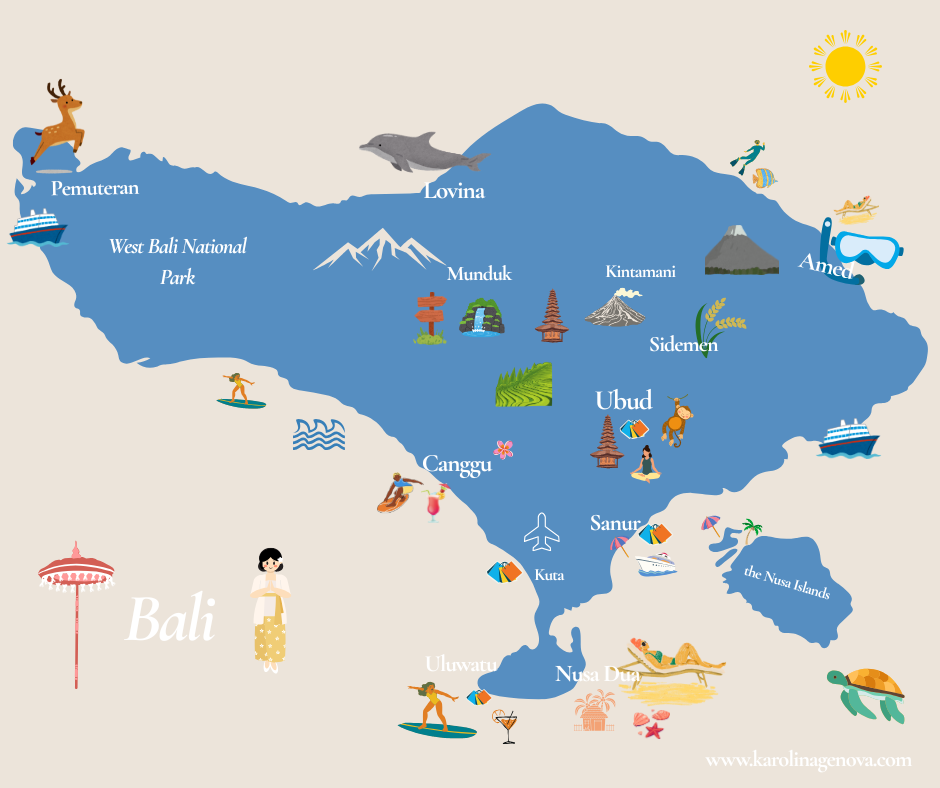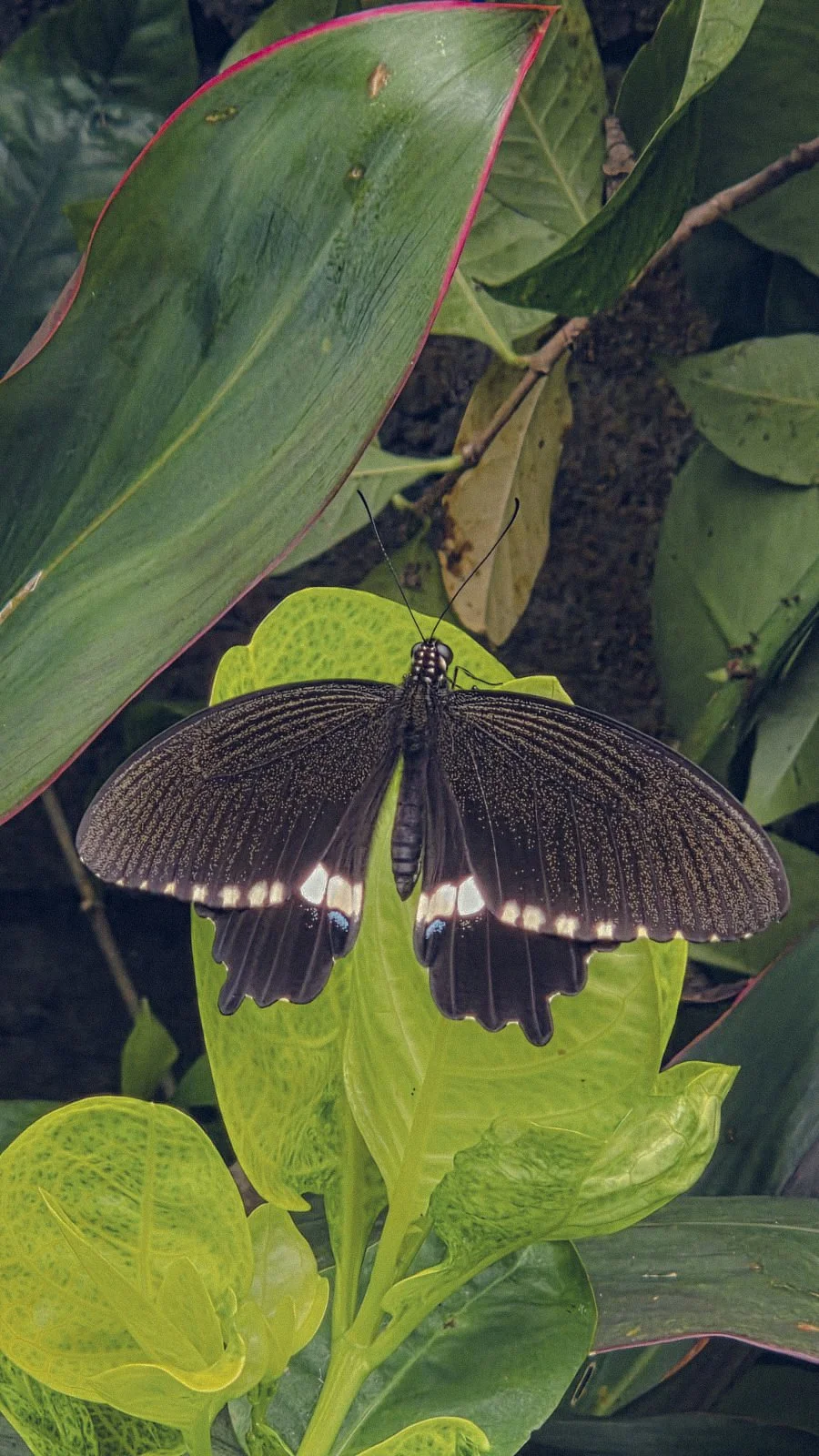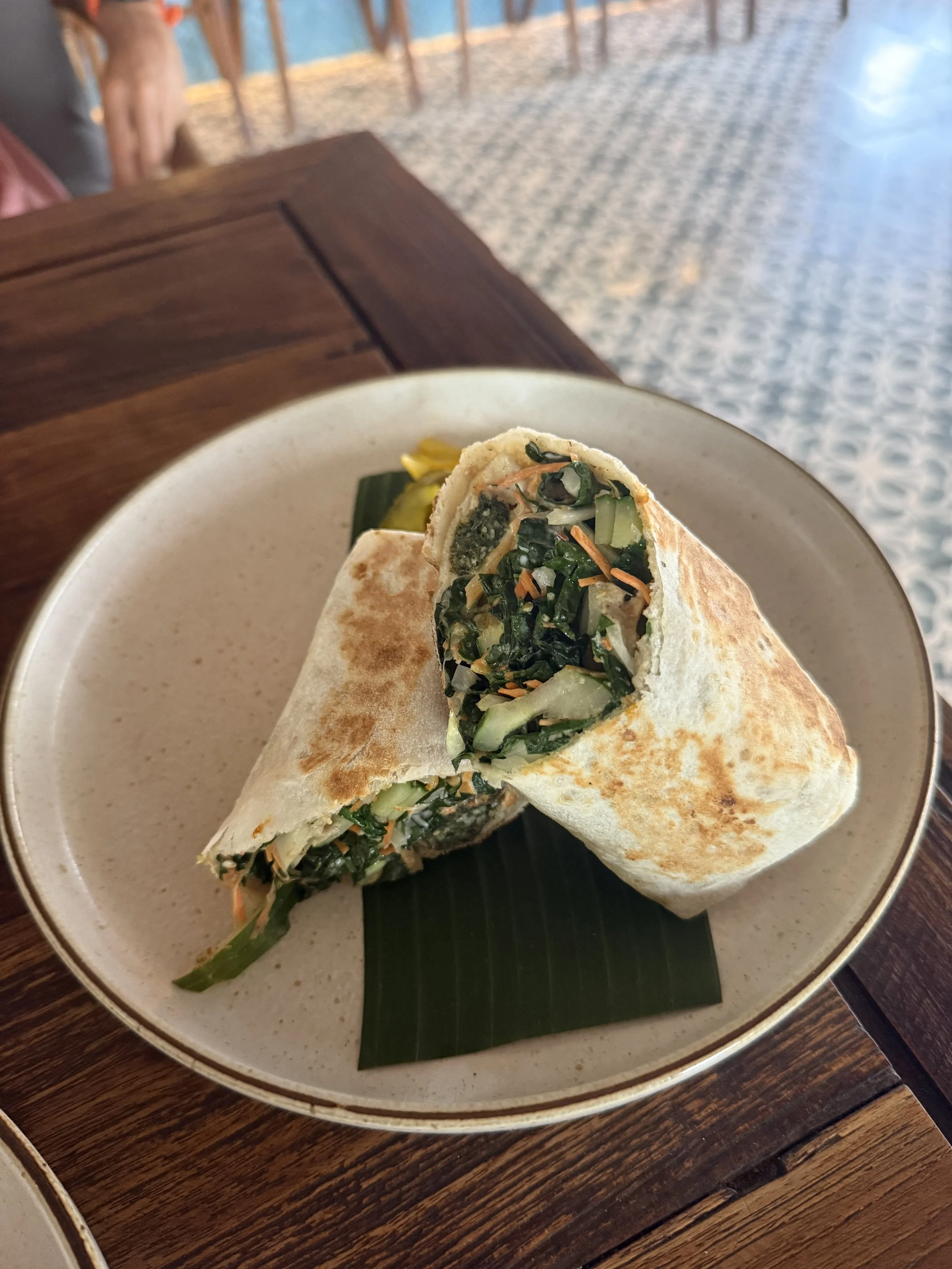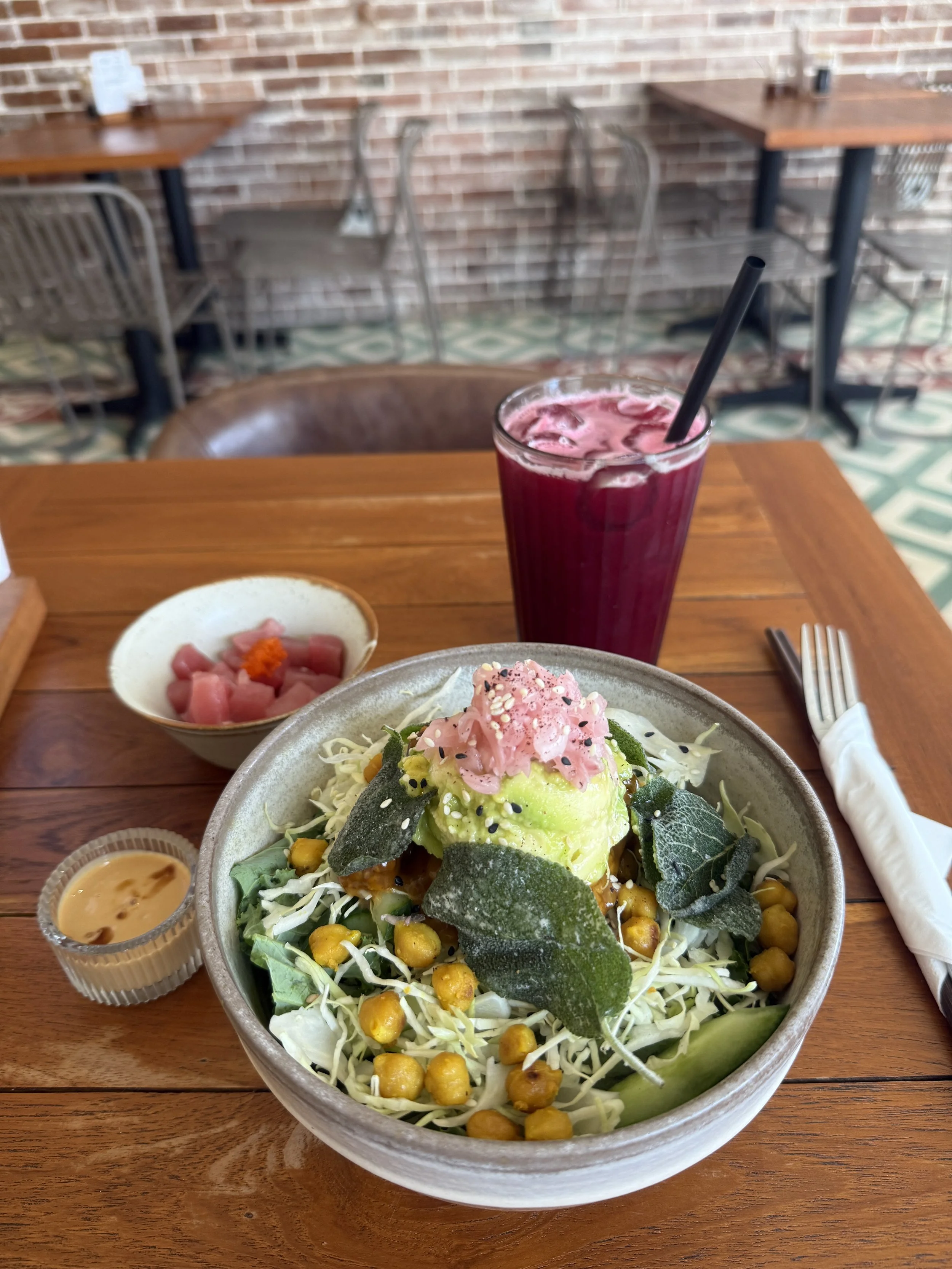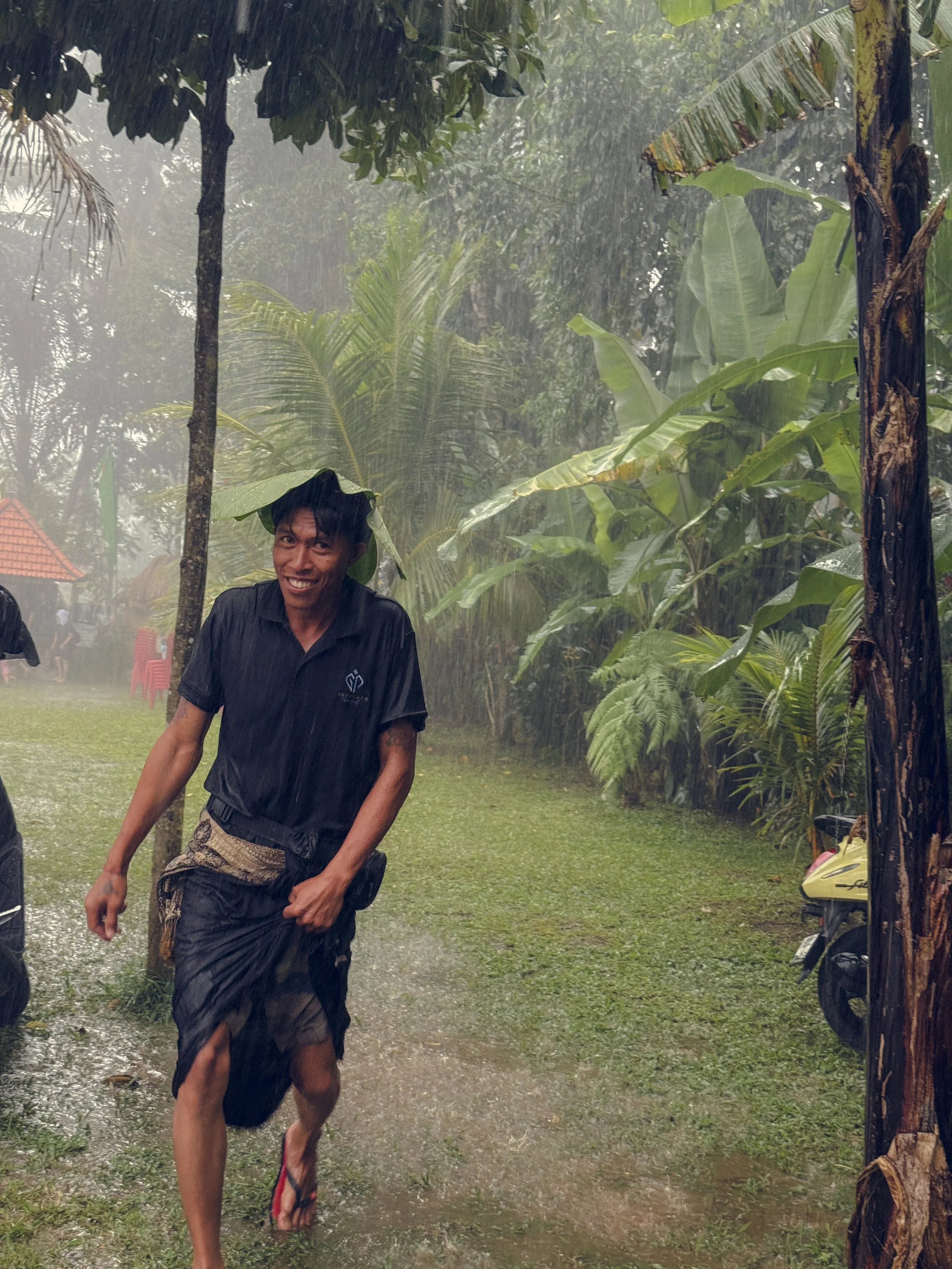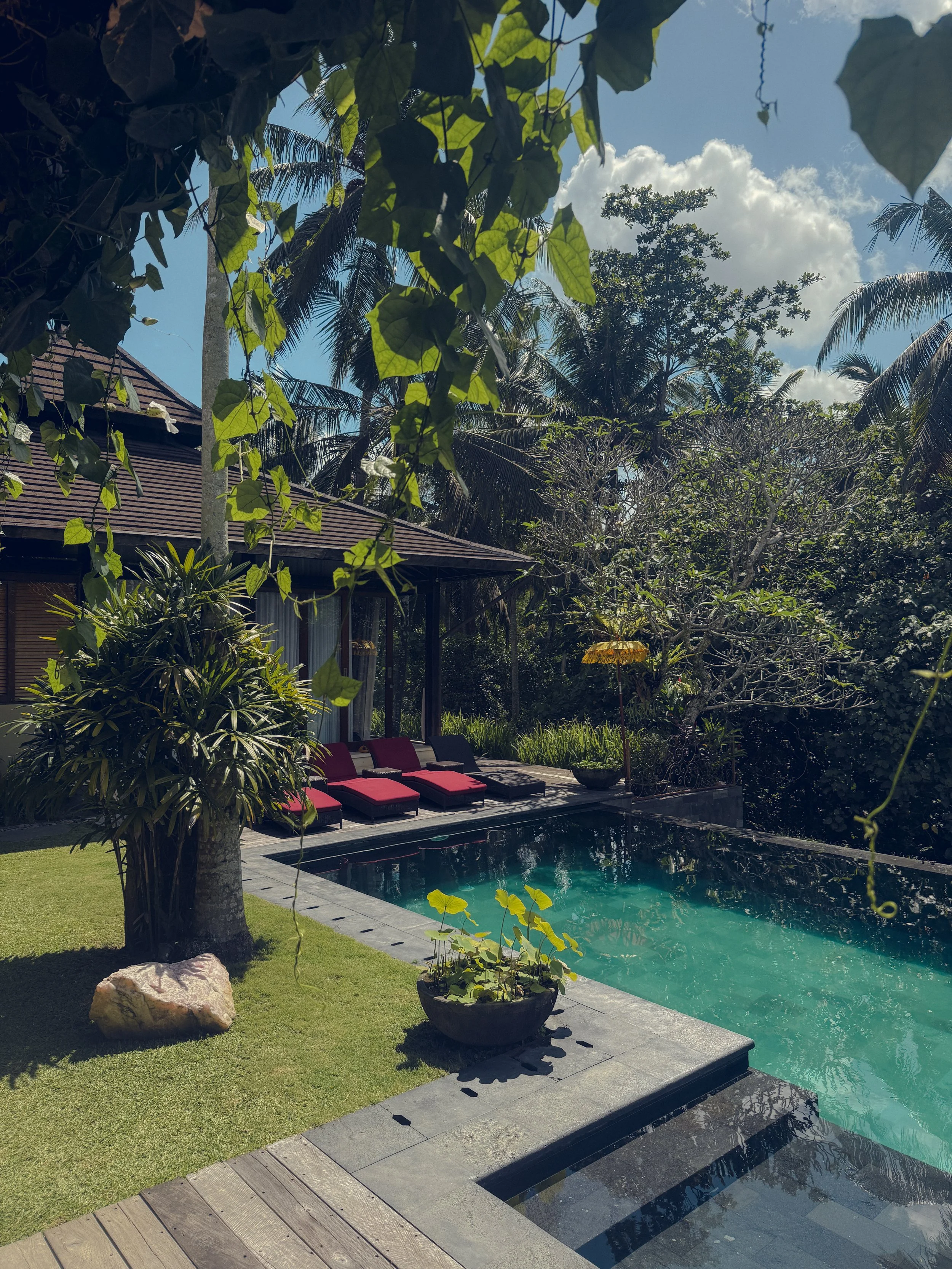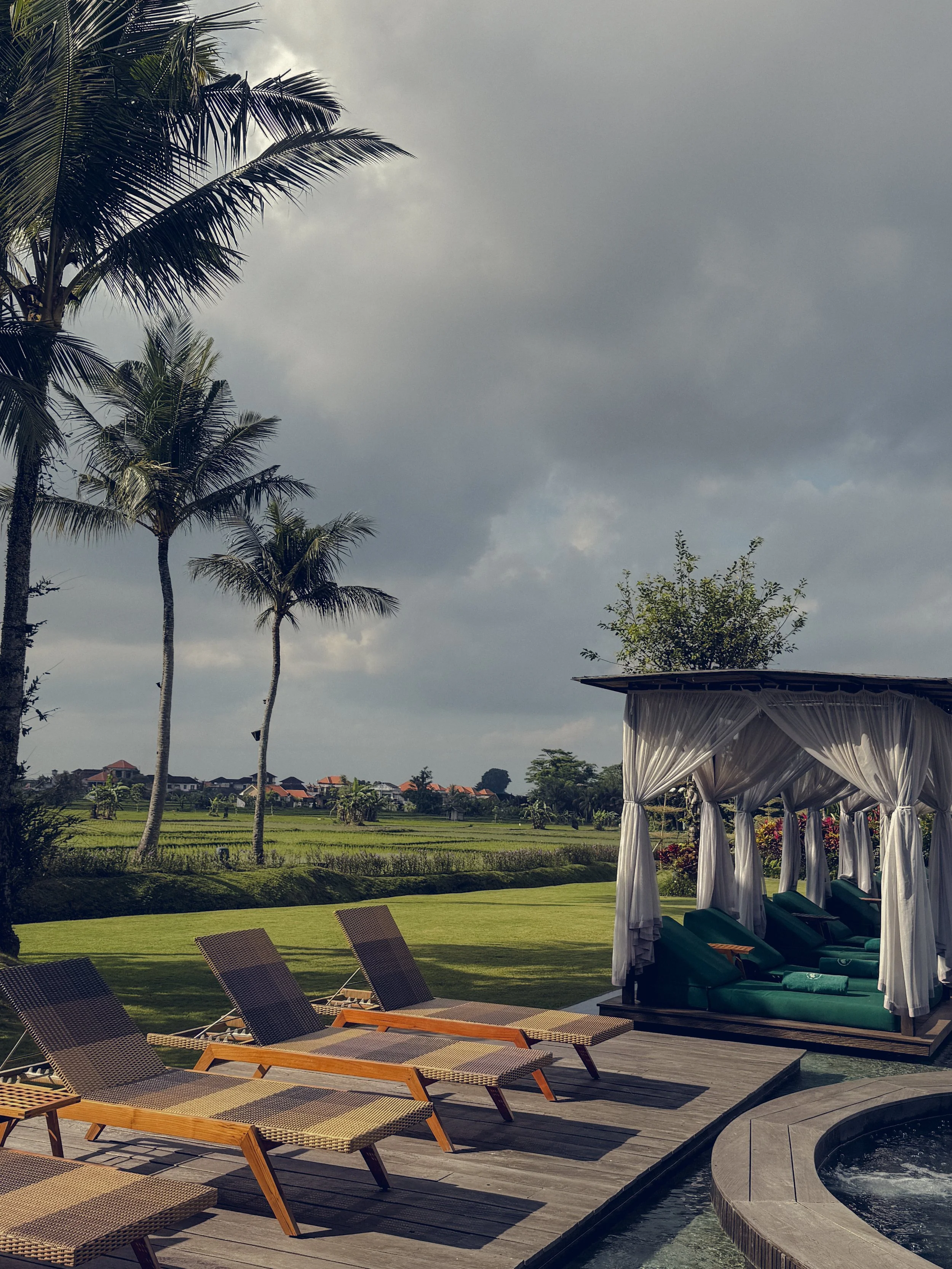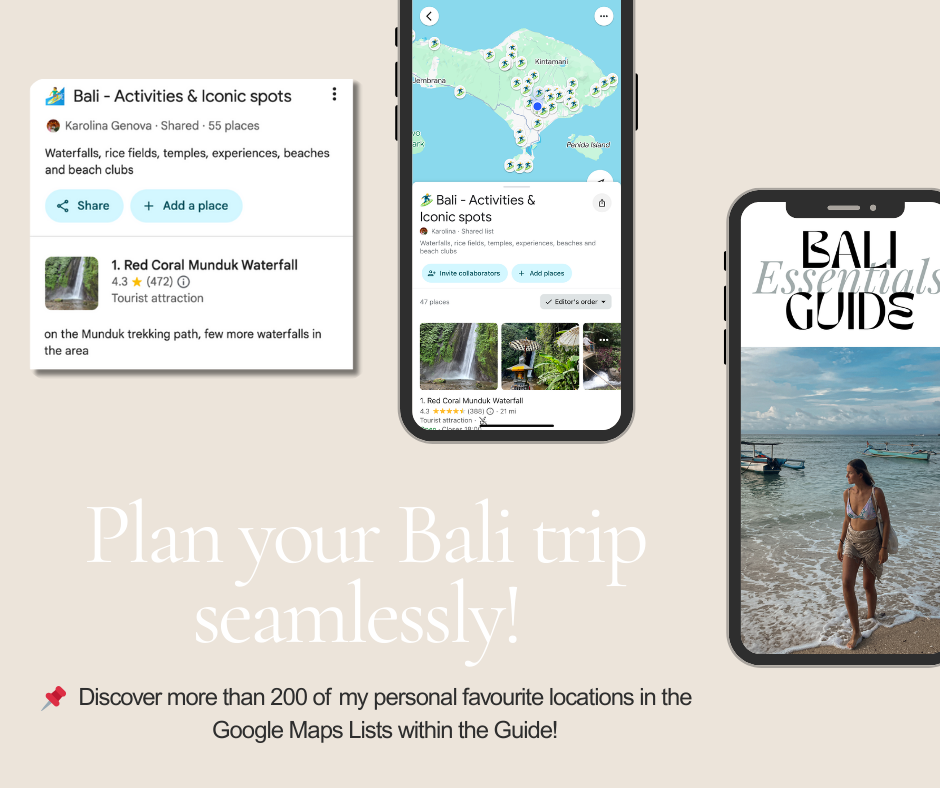Most asked bali questions - answered
If you’ve been planning a trip to Bali, you’ve probably typed at least one of these questions into Google already. Over time, I’ve realised that whether it’s someone’s first time visiting or their fifth, the same curiosities keep popping up.
I’ve collected the most common questions I get asked – and answered them here, in my own words, with honest tips from my experience of living and travelling all over the island.
1. Best areas to stay in Bali?
This is a tough one because it really depends on your preferences and the purpose of your trip. Each region in Bali has its own vibe and attracts a different type of traveller.
You’ve got the popular areas like Uluwatu, Canggu, and Ubud – busier, full of things to do, and great for first-time visitors. Then there are the quieter spots like Munduk and Amed – more authentic, surrounded by nature, and a bit further out… but 100% worth spending a few days in.
Here’s a quick breakdown:
Uluwatu – beautiful beaches, surf, clifftop sunsets, trendy cafés, beach day clubs and island vibe feeling
Ubud – cultural town, jungle vibes, rice fields, waterfalls, art and shopping
Canggu – younger crowd, digital nomads, cool cafés, surf, nightlife
Munduk – cooler air, mountain trails, and stunning waterfalls, authentic Balinese countryside
Sidemen - cute countryside village - perfect for relaxing and being in the nature, ricefields, and waterfalls
Amed – black sand beaches, snorkelling, and diving in the Bali Sea
Seminyak and Kuta - commercial and touristy. I would avoid staying there.
I’ve written detailed blogs about each area plus one about My favourites areas to visit in Bali – worth checking if you’re still deciding.
📌 For hotel recommendations, I have listed my favourite hotels and airbnbs in my BALI GUIDE.
2. What’s the typical method of payment in Bali + money exchange?
Almost everywhere – shops, hotels, cafés – accepts cards. Some places charge an additional 2–3% fee for card payments, so using your home country debit card will be absolutely fine. However, I always recommend bringing a Wise or a Revolut card as a main method of payment.
In Asia, I always prefer using Wise as many locals do own Wise accounts.
Cash withdraws:
You can also withdraw cash from local ATMs. Some, like Mandiri and BCA, offer free withdrawals, while others, like Permata, charge around 50,000 IDR per transaction.
⚡ BE AWARE THAT skimming bank cards at ATMs in Bali is a thing, so always turn off your CASH Withdraw function off once you are done.
Remember that Cash is king, so always have cash on you as in less touristy areas, waterfalls, or warungs, you will need it.
Bring EUR/USD or get local currency before arriving? 💸
It’s always handy to have a some cash for your first day, but you don’t need to exchange your full travel budget before you arrive.
Bring EUR or USD (make sure USD bills are from after 2017, crisp and clean). You’ll find plenty of money changers in town - just check their Google reviews first to avoid scams.
Airport exchange rates are worse, so only change cash there if it’s really necessary.
3. what sim card to use in bali and how to stay connected?
Recently, when I travel, my number one thing is convenience and no waste of time. So, the Sim card I advise you to use if an International Travel E-Sim.
I always purchase mine from Airalo, and it’s been giving me perfect coverage across the whole island.
Using my code KAROLI5252, you will get $3.00 off your first purchase. You can install it right before your departure and activate it immediately when you land in Bali. Thus, you have mobile data straight at the airport.
4. How real is “Bali Belly” and is the water bad?
It is not a myth - but also not as scary as it sounds.
A lot of travellers come here, eat fried food, drink alcohol, get dehydrated, and then blame it on “Bali Belly.” I’ve been here a long time and have never had it.
For those who don’t know – Bali Belly is basically an upset stomach from adjusting to new food, water, and environment. If you are a Bulgarian and you are reading this - it is what you or your kids might’ve gotten when you went on a holiday to the Bulgarian seaside.
To prevent an upset stomach:
Take it slow in your first few days
Eat healthy, hydrate well (water + coconut water, or electrolytes)
Avoid ice from small street stalls or carts; restaurants use ice made from filtered water
Don’t panic and don’t overthink it
Water quality in Bali and brushing teeth:
Tap water isn’t safe to drink, but you don’t need to use bottled water for brushing teeth.
I used to panic about this before moving here – but now I see it’s unnecessary. In Kuta/Seminyak the water can taste worse, while in Ubud or the north it tastes more like normal water.
5. Any insects or animals we should be careful with?
Bali is tropical, so yes, you’ll see ants, mosquitoes, frogs, small geckos, and sometimes bigger lizards. I’ve seen a couple of non-poisonous snakes near rice fields or dead on the road.
Nothing dangerous unless you have a real fear of them – just remember you’re in Southeast Asia, not your city park.
For mosquitoes, use repellent (you can buy cheap or natural ones here). I’ve never had dengue and there’s no required vaccination for it
If you know you are more sensitive to bites, bring your typical antihistamine/creams with you.
6. Is it hard to find vegan or Western food? Can we cook or eat healthy?
In touristy areas, you’ll find everything. There are loads of vegan cafés, plant-based restaurants, and plenty of Western options alongside local food.
Prices are way cheaper than Europe, so eating out is very affordable.
Cooking: You can cook if you have a kitchen and time and you have a very specific diet. But I’ve not really heard of many people being fussed about cooking whilst on a holiday. But if you are here with your family and kids - there are very well-stocked supermarkets like Bintang and Pepito along with loads of fruits and veggie stalls selling at lower prices.
7. How to travel around Bali
Bali’s traffic can be heavy due to tourism and limited road infrastructure.
The main ways to get around are by car or scooter, as public transport is minimal. Many travellers hire a private driver for convenience, with daily rates averaging around €50.
Scooters are cheaper (€5–€10/day) and often faster thanks to shortcuts, but roads can be dangerous, so always wear a helmet and drive carefully or avoid driving if you’ve never been on a scooter. Bali is not the place to learn how to drive.
You’ll need an international or translated driving licence, both for legal reasons and insurance coverage.
Ride-hailing apps like Grab and GoJek are super handy for car or scooter taxis within the towns, just remember that they are not always available in remote areas.
8. Best time to visit Bali?
Bali has two seasons:
Wet (Nov–March/April)
Dry (April–Oct)
Weather is a bit unpredictable lately – we’ve had sunny November days and rainy July afternoons.
Wet season = fewer crowds, cheaper hotels, less traffic. Usually rain is just a couple of hours, not all day.
Dry season = hotter, busier, more traffic, higher prices.
My favourite months: March, April, May, June – and October, November.
9. Is Bali cheap or expensive? How much do I need per day?
Bali can be as cheap or as luxurious as you want. Accommodation will be your biggest expense:
Budget hotels: from €10/night
Mid-range: €30–80/night
Luxury: €100–1000+ per night
Food is affordable – around €10 per person for a big meal + drink. But there are loads of tempting items, so you can definitely spend a lot on food and drinks.
Scooter rental: ~€7/day. Fuel is cheap - 60 cents/litre.
Private driver: ~€40/day.
And then remember you have loads of fun stuff to do - massages, spa treatments, yoga classes, shopping, etc. which will add up to the budget.
I would recommend budgeting between €25-50 per day for meals, a massage plus some small purchases.
10. What’s really worth visiting in Bali - and what can be skipped?
I’ve been to many places across Bali, and each one has given me different feelings and emotions. But if I had to choose one spot I’ll keep coming back to—it’s Nungnung Waterfall.
On the other hand, there are places you’ve probably seen all over social media that I personally didn’t enjoy and consider tourist traps - like certain waterfalls near Ubud where you have to queue just to take a photo. For me, it’s not worth it (though some people enjoy it).
I often see the same 10 locations being recommended to tourists and no surprise they’re overcrowded and saturated. That’s exactly why I created my Bali Essentials Guide + Google Maps Bali Map - a digital guide with 200+ carefully curated locations across the island, based on my own research and travels.
These aren’t the places you’ll find in every second TikTok video. They’re my absolute favourites - my gems, authentic spots, and beautiful locations where you’ll leave feeling fascinated, not disappointed.
What’s inside the Guide & Map?
Activities & iconic spots – waterfalls, temples, rice fields, beaches, unique experiences
Restaurants & Cafés - brunch spots, local food, fine-dinings, specialty coffee
Trusted hotels, co-working & co-living spaces 🛏️
Sports, wellness & spas 🌿
Shopping and services
BONUS: My favourite locations on Nusa Lembongan & Nusa Ceningan
> Save time by skipping overhyped tourist spots
> Discover la crème de la crème of Bali - handpicked by someone who actually lives here


